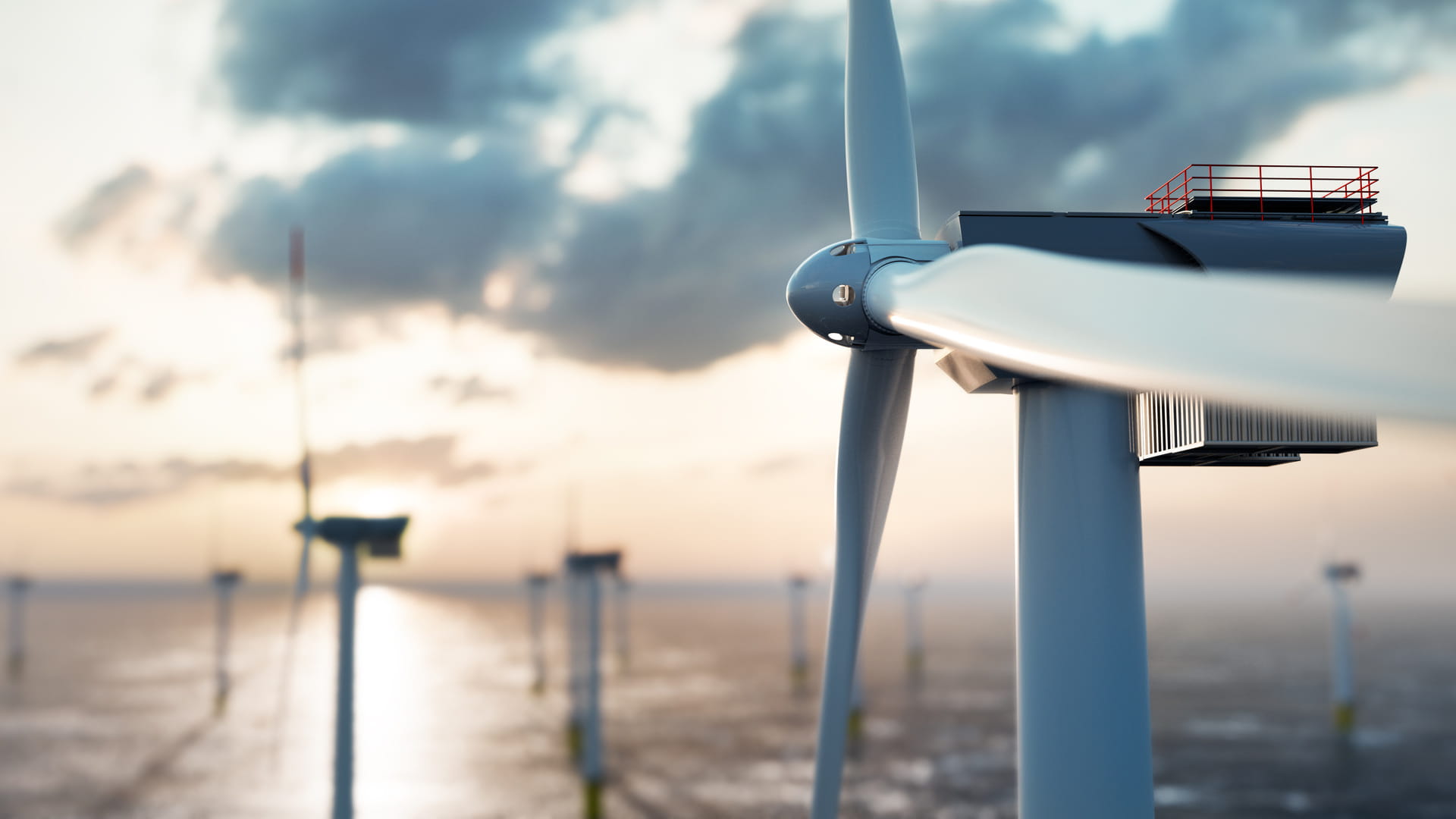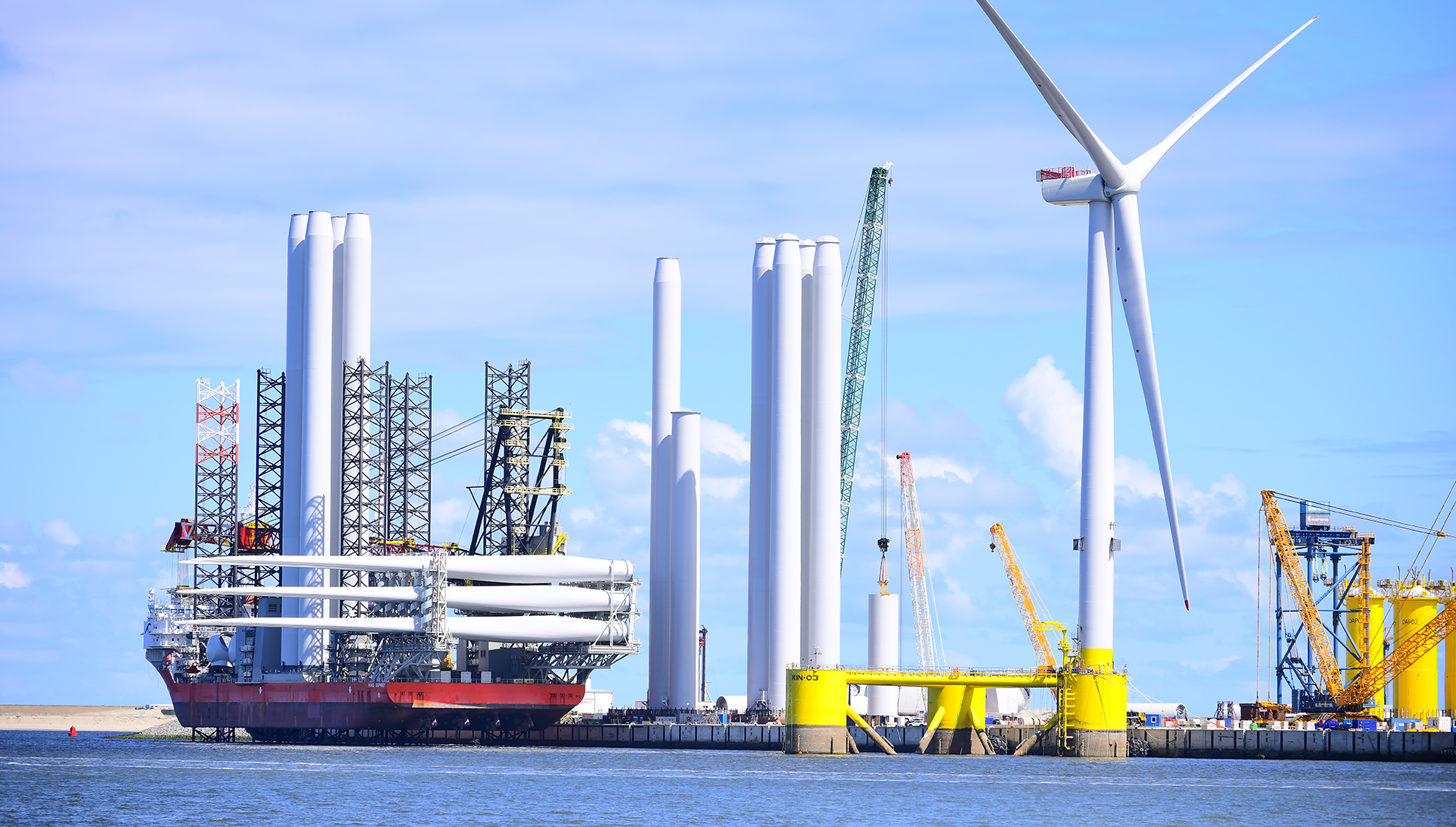The technical challenges of wind port development

Ports will be absolutely essential in realising offshore wind ambitions, playing a role in every part of delivery.
From manufacturing, installation, and assembly to operation, maintenance, and decommissioning, multiple ports will contribute at different stages in offshore wind projects. But facilitating offshore wind presents technical challenges any port involved will need to overcome.
The size and weight of components make hinterland transport impractical, so they will need to be manufactured in and around ports to facilitate sea transportation to marshalling and assembly ports.
For the accelerating floating wind market, the exact offshore wind technologies that will emerge as market leaders are still unknown, and that uncertainty makes it difficult for ports to make informed investments in the right infrastructure to facilitate the market.
In this article, we explore some of the key roles ports can play in delivering offshore wind, the technical challenges they present, and strategies you can use to overcome them.
3 key roles ports can play in offshore wind
Manufacturing Ports
These ports house the factories that produce the components for offshore wind like blades, towers, and foundations. They will need sufficient space to store the manufactured components, and appropriate out-loading facilities to facilitate their transport.
Construction Ports
Construction ports are utilised for the storage and assembly of components before shipping them to the installation site. This presents a large spatial demand on the port as it needs to house and manoeuvre multiple components while managing their import, assembly and export for a smooth installation.
Maintenance Ports
Maintenance ports can be split into two groups – major maintenance ports and routine maintenance ports. Major maintenance ports will be used for large tasks like turbine blade replacements, so will need to meet some of the technical requirements of construction ports but with a lower spatial requirement.
Ports used for routine operations and maintenance will have the smallest technical demand, as they are used to transport technicians, equipment and tools to and from wind farms to complete day-to-day tasks.
Everyone needs to be moving together in order to deliver on offshore wind ambitions, with governments, developers, and ports all having vital roles to play.
Developing your port in the face of uncertainty
The landscape in floating offshore wind contains a vast amount of floating technologies, all at different stages of development. And that means there is currently no certainty on what the predominant technology will be moving forwards.
With floating foundations and turbine components that can vary significantly in terms of weight, size and shape, it can seem impossible to know what to build for in both the onshore facilities and the marine facilities, which include floating foundation mooring and berthing requirements during major integration activities. When you add in the long timeframes necessary for a port development, making an informed decision is crucial to ensure any investments are appropriate for future states.
Ideally, governments, developers, and ports will all move together to meet ambitions and create an offshore wind supply chain that works safely, efficiently, and effectively. But when communication and collaboration are easier said than done, what can you do to more confidently develop your port?
A phased approach will help derisk investments
You need to find the right balance, where you make adequate developments to accommodate a sufficient proportion of the potential market without overinvesting – wasting time and resources. And one of the most secure ways to do so is by taking a phased approach.
Take a look at current technologies, and the capabilities of neighbouring ports to check how much of the offshore market is available to you. There may be ways you can adapt your port to accommodate a large percentage of offshore wind technology without limiting you from future development if required.
For example, if you are looking to develop facilities for floating offshore wind, you may invest in a quay wall that is designed for -16 metres, but only initially dredge to -12 metres.
That way you still have the option to dredge deeper as floating technologies develop, but can spread out your capital expenditure on dredging to lighten the financial pressure on your port.
The size and weight of components will sometimes require bespoke solutions
Components are likely to get larger and heavier as time goes by – and that’s also going to generate increased loading onto port structures.
If you can develop a structure that accommodates higher loads, rather than relying on developers to bring in their own load spreading measures, you may become a more attractive prospect to win projects.
Appropriate cranage and launching facilities are also key considerations. This is particularly true in Northern Europe, where large tidal ranges can limit the viability of barges and semi-submersible vessels. You may need to invest in more bespoke solutions – especially as floating foundations will need to be launched frequently.
An expert consultant can help remove uncertainty
One thing that can help remove some of the complexity of offshore wind development is having an expert partner to guide you through the process.
We can bring deep, specialist knowledge to your offshore wind development. We use over 140 years of experience in the maritime industry to help consult on and design the right adaptations for your port to facilitate offshore wind.
Our expertise working with shipyards means we can find appropriate and innovative solutions to the challenge of launching offshore wind components. And we can provide innovative digital tools and simulation technology to derisk your investments and give you confidence in your design choices.
We also stay abreast of government ambitions and developments in the offshore wind sector, so can keep your development fit for the future of the industry.
Get in touch with our expert team to discuss your port’s offshore wind ambitions, and the changes you need to make to turn them into reality.
![[object Object] [object Object]](https://www.royalhaskoningdhv.com/-/media/images/employees-profile-pics/r/raby-tim.jpg?h=500&iar=0&w=500&hash=1B93120AF3201175CC982BF358AEA827)



